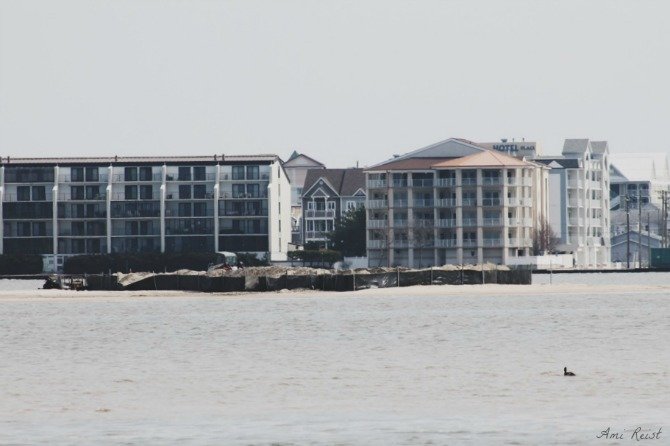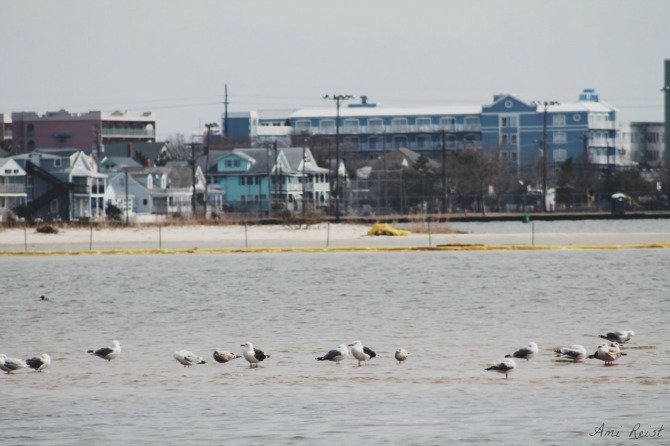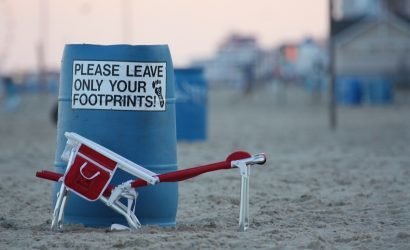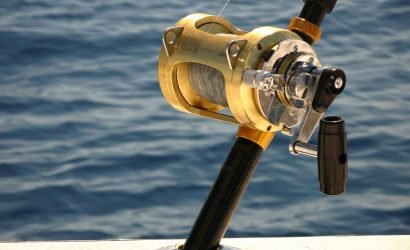Written by Shawn J. Soper, News Editor – The Dispatch
Work wrapped up last week on the dredging of a navigation channel at the entrance to a West Ocean City marina, including depositing the dredged material on Skimmer Island north of the Route 50 bridge in an effort to restore critical nesting habitat for a handful of threatened bird species.
In a continuation of a project that began two years ago, the Maryland Coastal Bays Program, in conjunction with the Maryland Department of Natural Resources (DNR), the Ocean City Fishing Center and Hi-Tide Marine in March started to work on a project to restore and replenish the large, low-lying island north of the Route 50 bridge known popularly as Skimmer Island.
 The project includes dredging the silted-in entrance to the Ocean City Fishing Center just south of the bridge and depositing the dredged material on Skimmer Island just north of the span. The project essentially serves two purposes: the first being clearing the entrance to the marina, which fills in each winter due to natural processes. The second, and perhaps most important, element is pumping the dredged material onto Skimmer Island, a sandy, crescent-shaped spit of land just to the north of the bridge, which has eroded over the years to become a fraction of its former self.
The project includes dredging the silted-in entrance to the Ocean City Fishing Center just south of the bridge and depositing the dredged material on Skimmer Island just north of the span. The project essentially serves two purposes: the first being clearing the entrance to the marina, which fills in each winter due to natural processes. The second, and perhaps most important, element is pumping the dredged material onto Skimmer Island, a sandy, crescent-shaped spit of land just to the north of the bridge, which has eroded over the years to become a fraction of its former self.
The project has been undertaken in each of the last three years, but a series of harsh storms including Hurricane Sandy last October made it more important than ever this year. For example, last year about 600 cubic yards of sand were pumped from the Fishing Center channel onto Skimmer Island but this year, about 4,000 cubic yards of material was pumped onto the island.
The pumping aspect of the project wrapped up last week. Thousands of cubic yards of sand was pumped onto the island and the water mixed with the sand drains off, creating mounds of new sand piled on Skimmer. Although the dredged material appears dark and murky, after the water drains off, it bleaches out quickly and resembles pure white sand in a matter of days. The last step of the project includes grading the piles of dredged material to restore the contour of the island.
Skimmer Island serves as a temporary home and nesting place for several species of colonial nesting birds, most notably the Black Skimmer and the Royal Tern, both of which are considered endangered in Maryland.
Black skimmers are short, stubby black and white birds that skim the surface of the water with the lower mandible of their orange and black razor-like beaks as they search for fish near the surface. The royal terns, also black and white, are similar but have a forked tail.
Both species are bare-ground nesting birds that require a sandy area free of predators to lay eggs and raise their young. Nesting is perilous as the birds lay their eggs just above the high tide line and must hatch and raise their young before high tides and storms wash away their temporary nesting areas.
However, the two species have seen their traditional nesting areas in coastal areas of Maryland decline rapidly in recent years to the point they are in danger of disappearing from the state’s ecological landscape. For example, in 1985, as many as 300 pairs of Black Skimmers nested and reproduced in various coastal areas of Maryland, but in recent years, the figure has dropped to as few as 25 pairs with dismal or no reproductive success. Similar figures bear out for other species such as the royal terns.
Part of the problem locally is the decline of natural islands and spits of land in the coastal bays suitable for bird nesting. Most of the small islands in the bays naturally migrate from year to year as sand is washed away from some areas and deposited in others. However, a variety of natural and man-made factors have changed the equation.
For example, when Skimmer Island was surveyed in 1998, it measured 7.1 acres. In 2003, it had been reduced to 5.6 acres, and in 2007, it was down to 3.9 acres, or roughly half the size it was a decade earlier. In the most recent survey, Skimmer Island had been reduced to just 2.7 acres. The annual pumping of the dredged channel material onto the island is an attempt to restore Skimmer to its former size, or at least maintain it.
Photos by Ami Reist.









